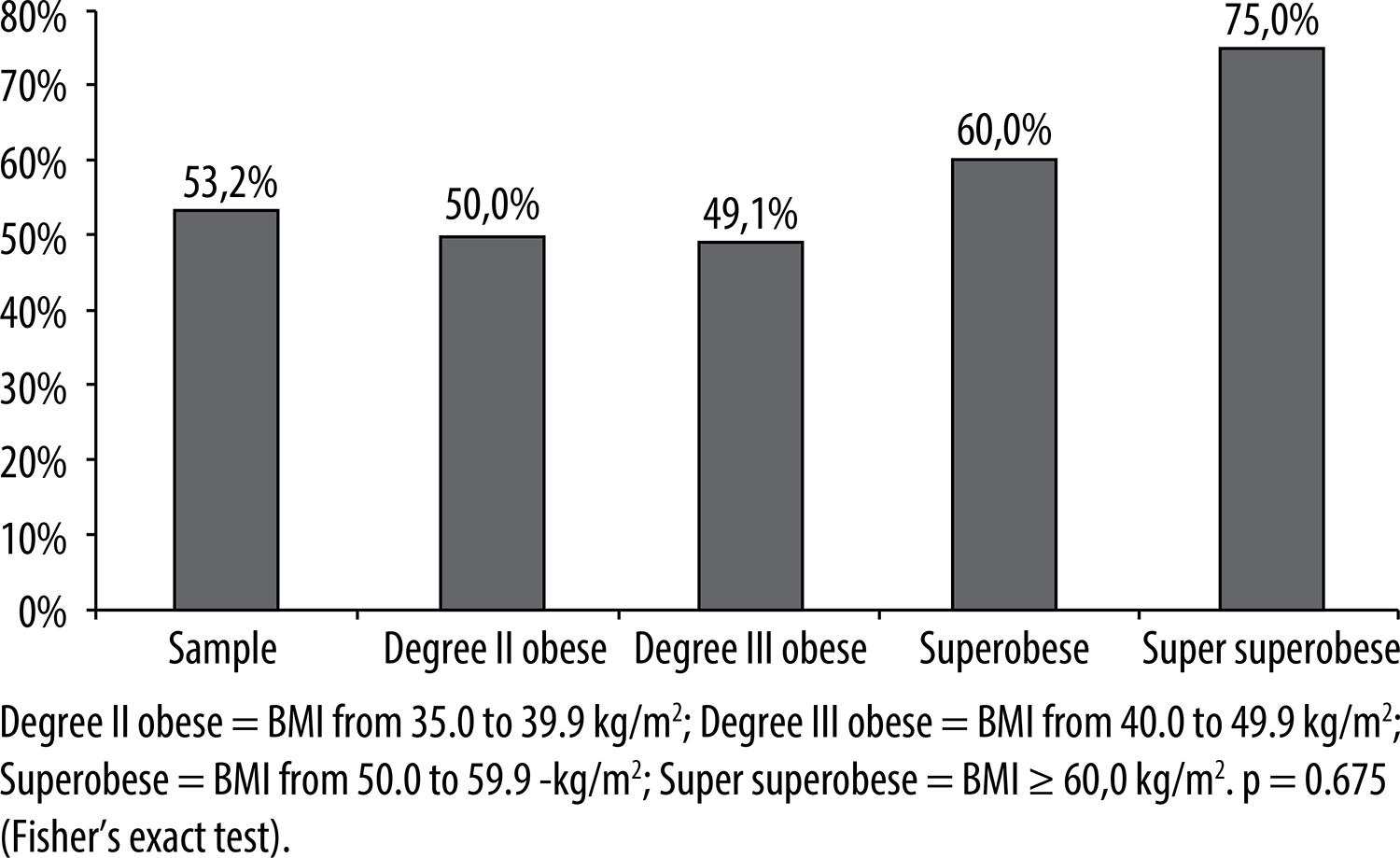Objective
Investigate binge eating (BE) prevalence in women according to the obesity degree and assess the associated factors.
Methods
Cross-sectional study with female adults presenting body mass index (BMI) ≥ 35 kg/m2. The analyzed variables were: sociodemographics, health status, obesity history, lifestyle, eating behavior and obesity degree. In order to analyse BE it was used the Binge Eating Scale (BES), which is considered positive when BES ≥ 18 points. Prevalence and prevalence ratios (PR) were calculated with confidence intervals (CI) of 95%. Multivariate analysis was carried out using Poisson regression.
Results
BE prevalence was 53.2%, and the prevalence in super superobese women (BMI ≥ 60 kg/m2) was 75%. After multivariate analysis, associations were observed between the age group 40-49 years old (PR = 2.0; 95% CI = 1.2-3.4) and the “snacking habit” (PR = 1.9; 95% CI = 1.2-2.9).
Conclusion
The prevalence of BE in severe obese women was high. Association with the “snacking habit” can be a BE marker that should be monitored in the severely obese individuals that fit this profile.
Obesity; women; eating behavior

